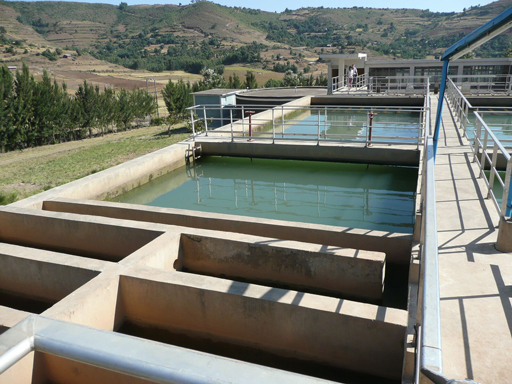5.1 The need for large-scale water treatment
Water treatment is the process of removing all those substances, whether biological, chemical or physical, that are potentially harmful in water supply for human and domestic use. This treatment helps to produce water that is safe, palatable, clear, colourless and odourless. Water also needs to be non-corrosive, meaning it will not cause damage to pipework.
In urban areas, many people live close together and they all need water. This creates a demand for large volumes of safe water to be supplied reliably and consistently, and this demand is growing. As urban populations increase, there is a need to find new sources to meet the growing demand. If groundwater is available this can often be used with minimal treatment but any surface water source will need to be treated to make it safe. For towns and cities, the water supply is then best provided by large mechanised water treatment plants (Figure 5.1) that draw water from a large river or reservoir, using pumps. (‘Mechanised’ means that machines, such as pumps and compressors, are used). The treated water is then distributed by pipeline, as you learned in Study Session 1.

The size of the treatment plant required is determined by the volume of water needed, which is calculated from the number and type of users and other factors. Section 5.6 explains how this calculation is made but first you will look at the main stages in the water treatment process.
Learning Outcomes for Study Session 5
